Zotac ZBOX CI540 nano Review: A Fanless Haswell-Y mini-PC
by Ganesh T S on October 31, 2014 11:00 AM ESTPerformance Metrics - I
The Zotac ZBOX CI540 nano was evaluated using our standard test suite for low power desktops / industrial PCs. We revamped our benchmark suite earlier this year after the publication of the Intel D54250WYK NUC review. We reran some of the new benchmarks on the older PCs also, but some of them couldn't be run on loaner samples. Therefore, the list of PCs in each graph might not be the same.
Futuremark PCMark 8
PCMark 8 provides various usage scenarios (home, creative and work) and offers ways to benchmark both baseline (CPU-only) as well as OpenCL accelerated (CPU + GPU) performance. We benchmarked select PCs for the OpenCL accelerated performance in all three usage scenarios. These scores are heavily influenced by the CPU in the system. The real tussle is between the CI540 nano, the BXBT-1900 and the ECS LIVA. Amongst these three, the CI540 nano and ECS LIVA are the only passive PCs. Given these constraints, it is indeed creditable that the unit performs the best amongst the three.
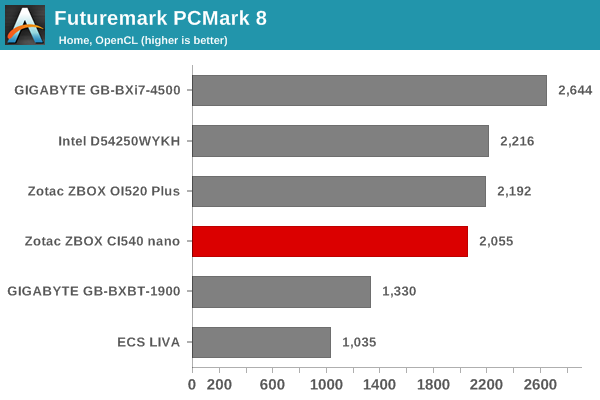

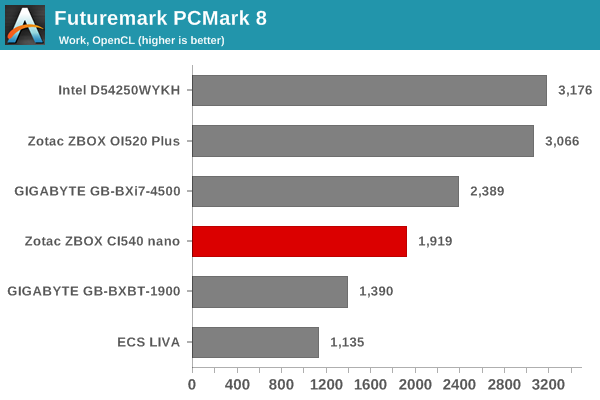
Miscellaneous Futuremark Benchmarks
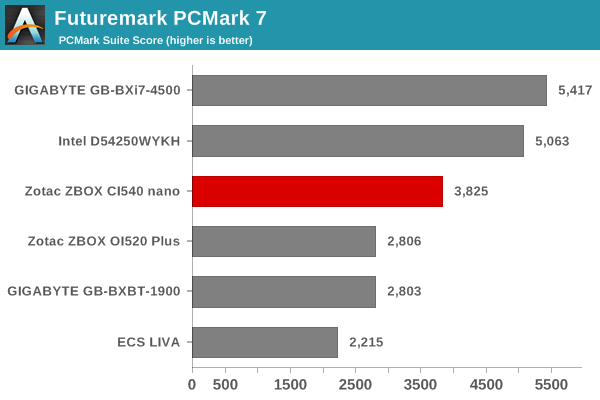
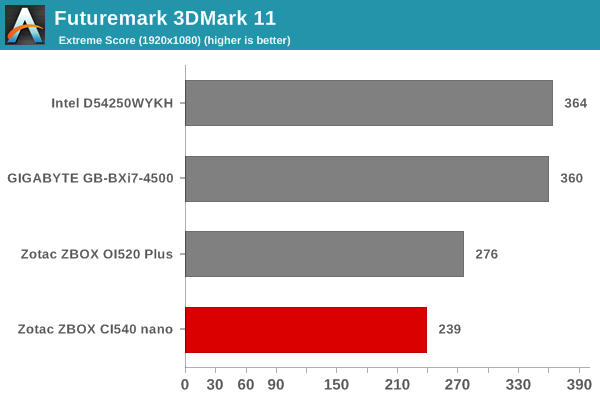
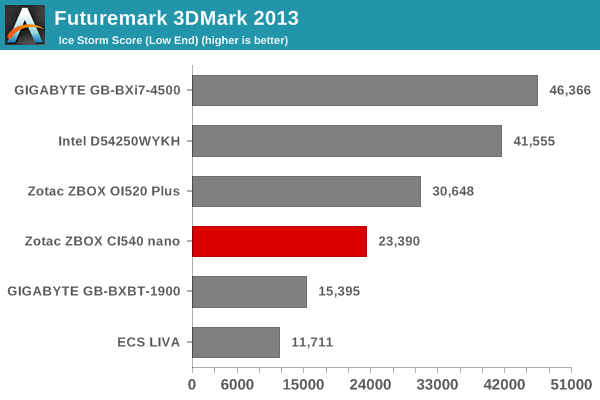

3D Rendering - CINEBENCH R15
We have moved on from R11.5 to R15 for 3D rendering evaluation. CINEBENCH R15 provides three benchmark modes - OpenGL, single threaded and multi-threaded. Evaluation of select PCs in all three modes provided us the following results.

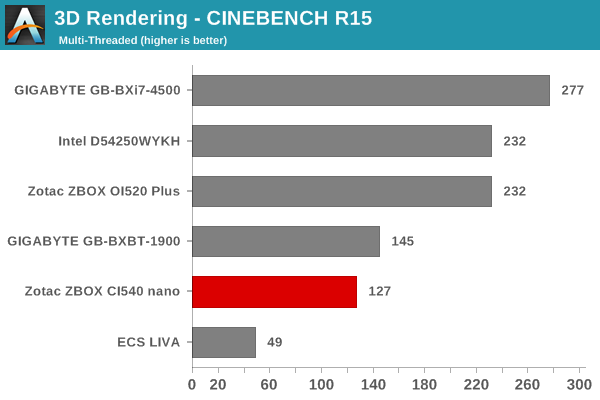
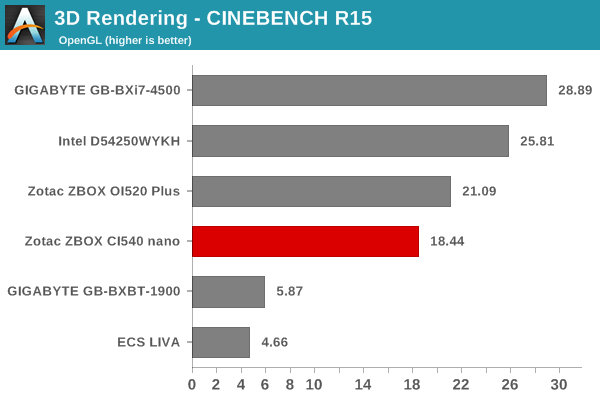










48 Comments
View All Comments
MadMan007 - Friday, October 31, 2014 - link
Please disassemble and see if the plastic is in place on the thermal pad or not. Since this seems to be a retail unit and not a pre-production sample, it could help to answer the question posed on those links and verify that it is not a production unit issue.Also, while the relatively higher idle power draw could be fixed, when we're talking a difference of 2-4W it's not really that big a deal in absolute terms.
noelbonner - Tuesday, November 11, 2014 - link
Why don't people get a "real" mini-PC instead (such as they ones that are rated highly at http://tinyurl.com/obzllgb for example)?BinaryTB - Friday, October 31, 2014 - link
An IR port would have been nice, for use with remotes and such, but an external usb adapter is usually the only option these days it looks like.Also, would Steam In-Home Streaming benchmarks be worth testing on these devices? I know I use my HTPC sometimes in my living while my gaming desktop is elsewhere in the house (both devices on gigabit ethernet and nvidia hardware encoding on the host and intel hw decoding on the htpc client). Latency and such would be a good measure, assuming it would vary statistically for each device.
nathanddrews - Friday, October 31, 2014 - link
The external IR will probably be your only option for he foreseeable future. Newer HT gear can usually be networked and controlled via apps or browser sessions. Steam IHS is pretty solid even on wireless Atom devices, so it's probably pointless to review on an i5 with GbE. I'm with you, though, and would like to see a proper review of the IHS feature someday.meacupla - Saturday, November 1, 2014 - link
IR is so outdated.BT remote should be standard already.
Alexvrb - Sunday, November 2, 2014 - link
IR works and is probably the lowest power option there is. The less often I have to change remote batteries, the better.cjb110 - Monday, November 3, 2014 - link
Unless you want to use a universal remote...IR works and is lower power...the only advantage BT offers is less reliance on Line of Sight.BuddyRich - Monday, November 3, 2014 - link
IR is good for learning but if line of sight is a concern get an RF -> IR blaster and a remote that supports both IR and RF, some Harmony's, URCs, Philips do.jmorey - Monday, November 3, 2014 - link
Zotec says it has an integrated IR receiver and visually it appears that it does (see the transparent black plastic area between the WiFi LED and the memory card reader slot). Can someone confirm that? It is a required feature for me as I already have Harmony remotes that are IR only.josue16 - Friday, October 31, 2014 - link
Is this the only fanless pre-built Haswell based UCFF PC available?